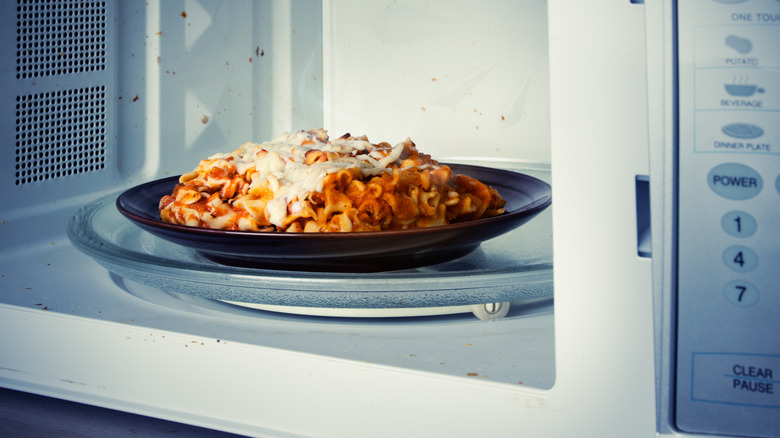One of the most tragic sounds to ever come from your microwave is the unmistakable snap of your plate breaking when it’s loaded with your eagerly awaited dinner. Let’s face it: You’re hungry, which is why you’re trying to heat up a plate of food quickly. The last thing you want to deal with is a messy food spill inside the microwave and potentially inedible food due to small shards of broken glass or pottery that have exploded around your meal. Or, heaven forbid, you nuked your coffee mug, and instead of just a bad cup of reheated coffee, you’ve got a broken mug and a pool of joe to wipe up.
Many of these kitchen tragedies are caused by a small, maybe even invisible, crack in your dinner plate or bowl. When the outside waterproof glaze is broken with a chip or hairline fracture, even a little bit of moisture trapped in the tiny crevice will expand as it gets hot. That expansion pushes the edges apart until they finally break completely, leaving you with a sad mess and a rumbling stomach.
How to avoid breakage

A good way to prevent dinnerware from letting you down while cooking in the microwave is to inspect it for those little cracks regularly. You might notice that some plates or bowls have a hollow sound when tapped, which indicates a crack, while the beginnings of other cracks might only be detectable by feel.
Take care when microwaving glass containers too. Cracks are easier to spot in clear glass, but even uncracked, seemingly perfect glass containers can break if overheated. Unless they’re specifically marked as microwavable, many appliance makers recommend limiting glassware to three minutes of cooking time to prevent the possibility of shattering.
Overall, china and glass are much better choices for microwave reheating than styrofoam (which should never go in the microwave) or plastic containers, just as some foods do better when reheated in the appliance than others. Avoiding those cracked plates and sticking to glassware that’s marked microwave-safe will keep dinner on schedule when your next meal is heating up in the microwave.






